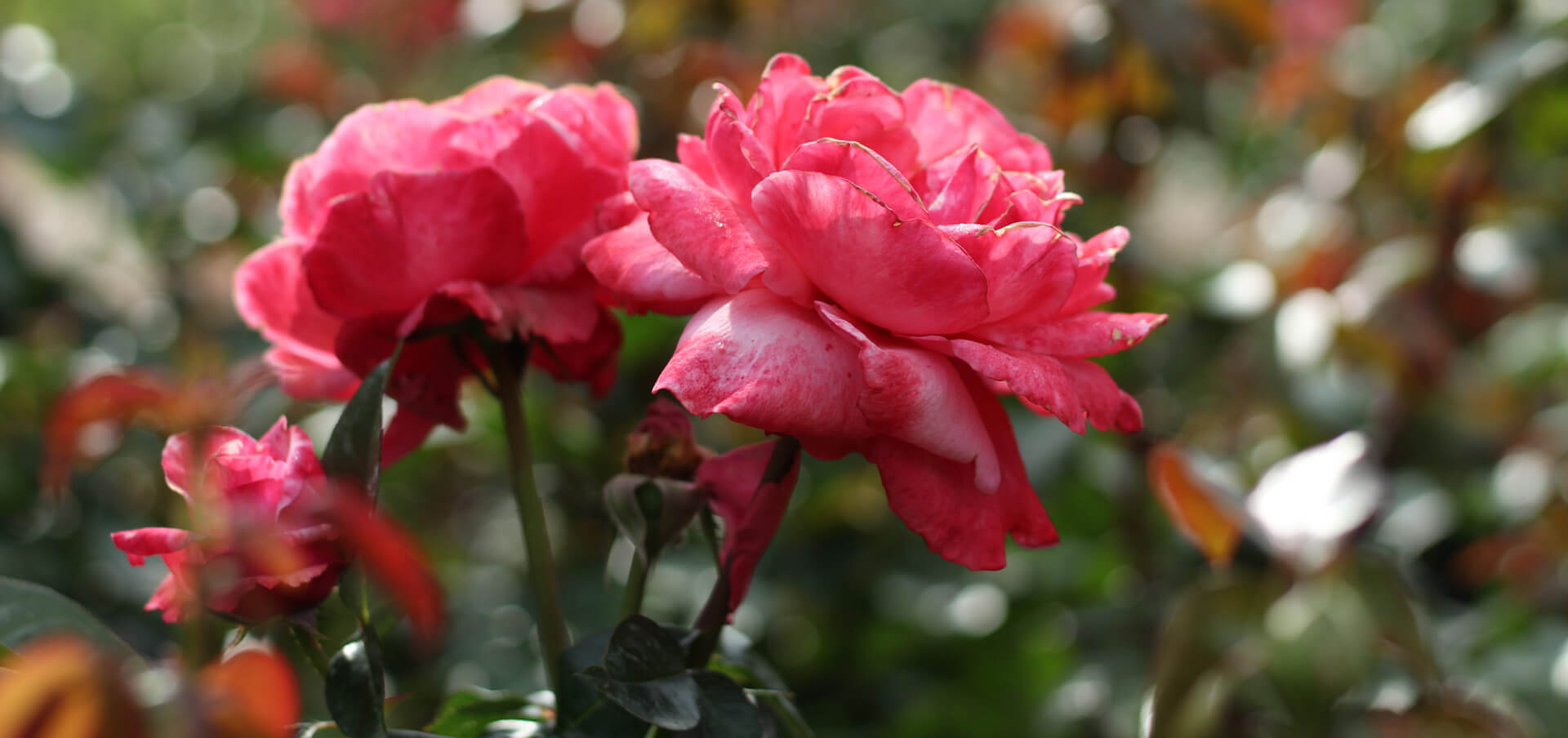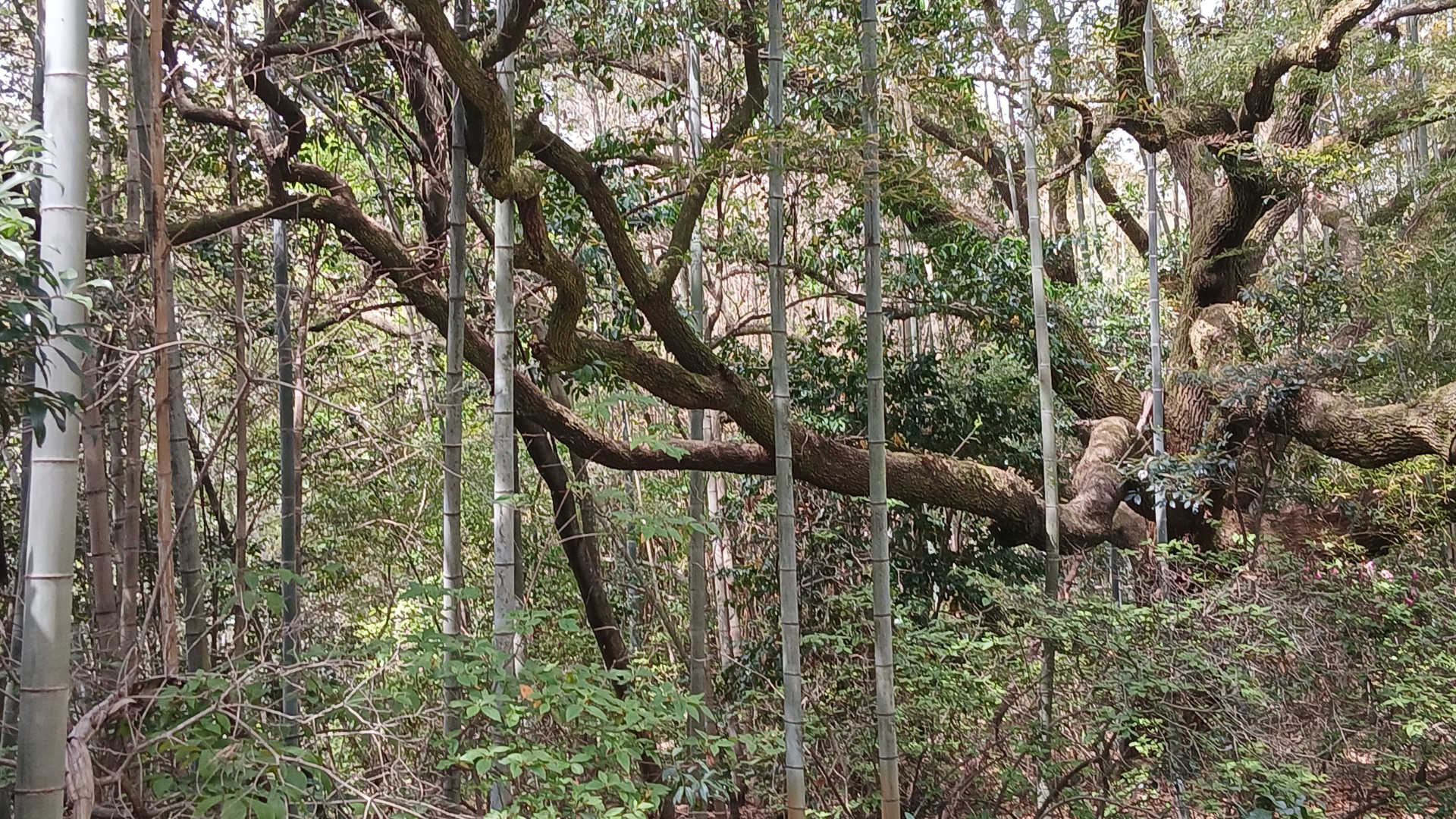Bamboo is the largest grass on earth… we all could have guessed that, I suppose. When I am standing in our acre-sized, 60’ tall patch of Moso bamboo (Phyllostachys edulis), I feel like I’m in the movie “Honey, I Shrunk the Kids.” Some types of bamboo, quite simply, are larger than life. Actually, the world’s largest bamboo, “dragon bamboo” aka Dendrocalamus giganteus can reach 150’ tall. We’d try growing it here, except dragon bamboo is not tolerant of our occasional hard freezes. As the soil warms in mid spring, new bamboo culms (fancy word for stalks) emerge from the beneath the ground. Actually, “explode from the ground” is probably a more accurate description. Whether destined to be 1’ tall or 150’ tall, the new culms of most bamboo species go from zero to full size within a single warm season—stacking on up to a foot a day!
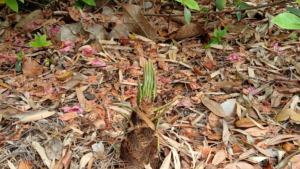

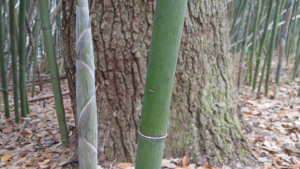
No other plant grows like bamboo! So, right now at Bellingrath Gardens and Home, our bamboo groves are pushing up new culms—something truly worth witnessing—a real “culm”-ination of spring.
Bellingrath Gardens is home to a few running bamboo clones, including the aforementioned long-running Moso (Phyllostachys edulis) and a couple unidentified shorter-running, smaller-statured Phyllostachys clones. Some bamboo spreads to create a dense screen, and some runs a very long way—offering only a few culms in comparison to the area it occupies. For most gardens less than a few acres, running bamboo (aka: “leptomorphs”) are simply too aggressive. So what I really want to cover today is clump-forming bamboo (aka “pachymorphs”)—the kind of bamboo that wouldn’t run even if being chased by starving pandas (that’s not my saying, but I cannot say it better!) Visible in the distance from Mirror Lake Bridge, looking to the southwest, you’ll see some very large clumping bamboo. We estimate that in the 1960’s, several clumps of the non-running genus Bambusa were installed as part of the Asian American Garden’s construction. More specifically, these clumps are all likely Bambusa multiplex ‘Riviereorum’. I’m afraid we are beyond the reach of “spell check” at this point.
‘Riviereorum’ tops out at around 30’ tall. But here’s the cool part…it’s unrestricted ground contact footprint in 60 years has only increased to about 10’ wide (or about 2” per year). That’s pretty darn impressive if you look at it like a supersized ornamental grass. Dropping to between 13f and 17F last January, this clone lost its leaves, but did not suffer damage to the actual canes– they are leafing back out as I type. It is also worth mentioning that the unprecedented 8” winter 2025 snow did not flatten the stalks…they bounded right back. Nevertheless, individual culms only survive about five to ten years before they die. After 60 years, our over-mature clumps are composed as much of dead canes as living canes. So, although this year’s cold didn’t kill the clump to ground and the weight of the snow didn’t smash the bamboo flat, it’s time to hit the reset button…it’s time to cut them back to the ground so they can re-emerge fresh.
With culms in excess of 1” diameter, traditional grass cut-back tools like hedge shears and pruners are simply outmatched. I searched the internet for videos or advice on how to cut back a large clumping bamboo. The search returned plenty of hits about killing and removing “invasive” running bamboo, but I found very little about “rejuvenation pruning” a tight clumping bamboo. So, we went with one of our primary horticultural “problem solving” tools…a chainsaw. Disclaimer: when used improperly or misapplied, chainsaws have been found to cause even larger problems than the original problem to be solved—as some of know all too well. However, in this case, the chainsaw proved to be our best tool (within reach and within reason) to cut back the dense canes.
I’m about to share how we cut back bamboo with a chainsaw. I cannot stress enough the importance of chainsaw safety and safety gear. I am in no way claiming that the following method is only way or the best way to rejuvenate clumping bamboo. Please be safe out there!
Dense clumps are more difficult to cut than running bamboo because there is not enough room between canes to target them individually. Additionally, stooping low and awkwardly reaching out with the chainsaw to cut canes within a couple inches of the ground proved not to be the best practice—not only because there are 30’ tall bamboo trees falling everywhere while other canes are trying to bind up the saw, but also because of having to walk across a bed of 6” tall sharpened bamboo stubs. Just no comfortable landing there! We took a careful step back and decided to adjust our approach…the first cut was made at a comfortable 3’ high. Then after we cleared the fallen canes, and with a much more balanced posture, we made our final ground cut. Importantly, we quickly learned to only cut a few canes at a time before shutting off saw and clearing…easy does it. Finally, as a far less aggressive approach, dead canes can generally just be popped out of the living clump by hand—not as complete as a wholesale cutback, but it will go a long way towards tidying up an over-mature mammoth.
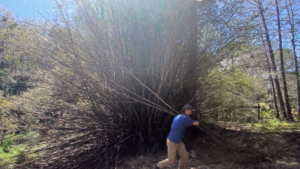
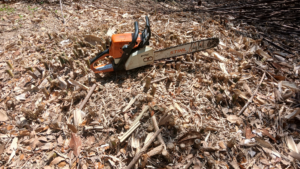
Although we could cut the bamboo back any time of year without killing it, we want to cut it back right before the new culms jump out of the ground to reduce “downtime” and so that the clump will return to mature size that season. As the new canes mature this summer, we’ll post a few more photos of the rejuvenated bamboo to our social media outlets.

